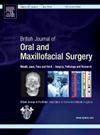Botulinum toxin A for the management of temporomandibular myofascial pain: A cohort study
IF 1.7
4区 医学
Q3 DENTISTRY, ORAL SURGERY & MEDICINE
British Journal of Oral & Maxillofacial Surgery
Pub Date : 2025-01-01
DOI:10.1016/j.bjoms.2024.09.012
引用次数: 0
Abstract
Myofascial pain represents the largest subgroup of temporomandibular disorders (TMD) that account for a common cause of non-dental orofacial pain. The management of TMD is complex due to the chronic nature of the condition, alongside acute episodes presenting to the clinician. A fundamental part of TMD management is consideration of the biopsychosocial element in its aetiology. First-line treatment of myofascial TMD includes early diagnosis, explanation and education, and conservative self-care measures. Botulinum toxin A (BTX-A) is now being used increasingly as an adjunct to conservative management of muskuloskeletal pain disorders due to its muscle-relaxant and analgesic properties. However, the scientific evidence regarding this is conflicting and it has been suggested that there is insufficient evidence to support the efficacy of BTX-A. To assess the effectiveness of masseteric BTX-A, a mixed methods analysis of a TMD-myofascial pain cohort who underwent BTX-A injections was therefore carried out. A total of 149 patients completed one round of treatment, and 61 of them completed an additional round. In total, 398 masseter muscles were injected. The mean preoperative visual analogue scale (VAS) pain score was 8/10, compared with a postoperative mean score of 3/10 six weeks after treatment. The mean percentage reduction in pain was 50%. Pain scores and quality of life scores improved considerably more in the severe pain group than in the mild group. Complete resolution of symptoms was reported in 21% of patients (n = 31). The treatment significantly improved patients’ reported pain and quality of life scores, highlighting key beneficial effects for the myofascial pain subgroup of TMD.
治疗颞下颌肌筋膜疼痛的 A 型肉毒杆菌毒素:一项队列研究。
肌筋膜疼痛是颞下颌疾病(TMD)中最大的亚群,是引起非牙科口腔面部疼痛的常见原因。TMD的管理是复杂的,因为病情的慢性性质,以及急性发作呈现给临床医生。TMD管理的一个基本部分是考虑其病因学中的生物心理社会因素。肌筋膜TMD的一线治疗包括早期诊断、解释和教育以及保守的自我保健措施。肉毒毒素A (BTX-A)由于其肌肉松弛和止痛的特性,现在越来越多地被用作肌肉骨骼疼痛疾病保守治疗的辅助药物。然而,关于这一点的科学证据是相互矛盾的,有人认为没有足够的证据支持BTX-A的功效。为了评估咬肌BTX-A的有效性,因此对接受BTX-A注射的tmd -肌筋膜疼痛队列进行了混合方法分析。共有149名患者完成了一轮治疗,其中61名患者完成了额外的一轮治疗。总共注射了398块咬肌。术前平均视觉模拟评分(VAS)疼痛评分为8/10,治疗后6周术后平均评分为3/10。疼痛减轻的平均百分比为50%。重度疼痛组的疼痛评分和生活质量评分明显高于轻度疼痛组。21%的患者(n = 31)报告症状完全缓解。治疗显著改善了患者报告的疼痛和生活质量评分,突出了TMD肌筋膜疼痛亚组的关键有益效果。
本文章由计算机程序翻译,如有差异,请以英文原文为准。
求助全文
约1分钟内获得全文
求助全文
来源期刊
CiteScore
3.60
自引率
16.70%
发文量
256
审稿时长
6 months
期刊介绍:
Journal of the British Association of Oral and Maxillofacial Surgeons:
• Leading articles on all aspects of surgery in the oro-facial and head and neck region
• One of the largest circulations of any international journal in this field
• Dedicated to enhancing surgical expertise.

 求助内容:
求助内容: 应助结果提醒方式:
应助结果提醒方式:


